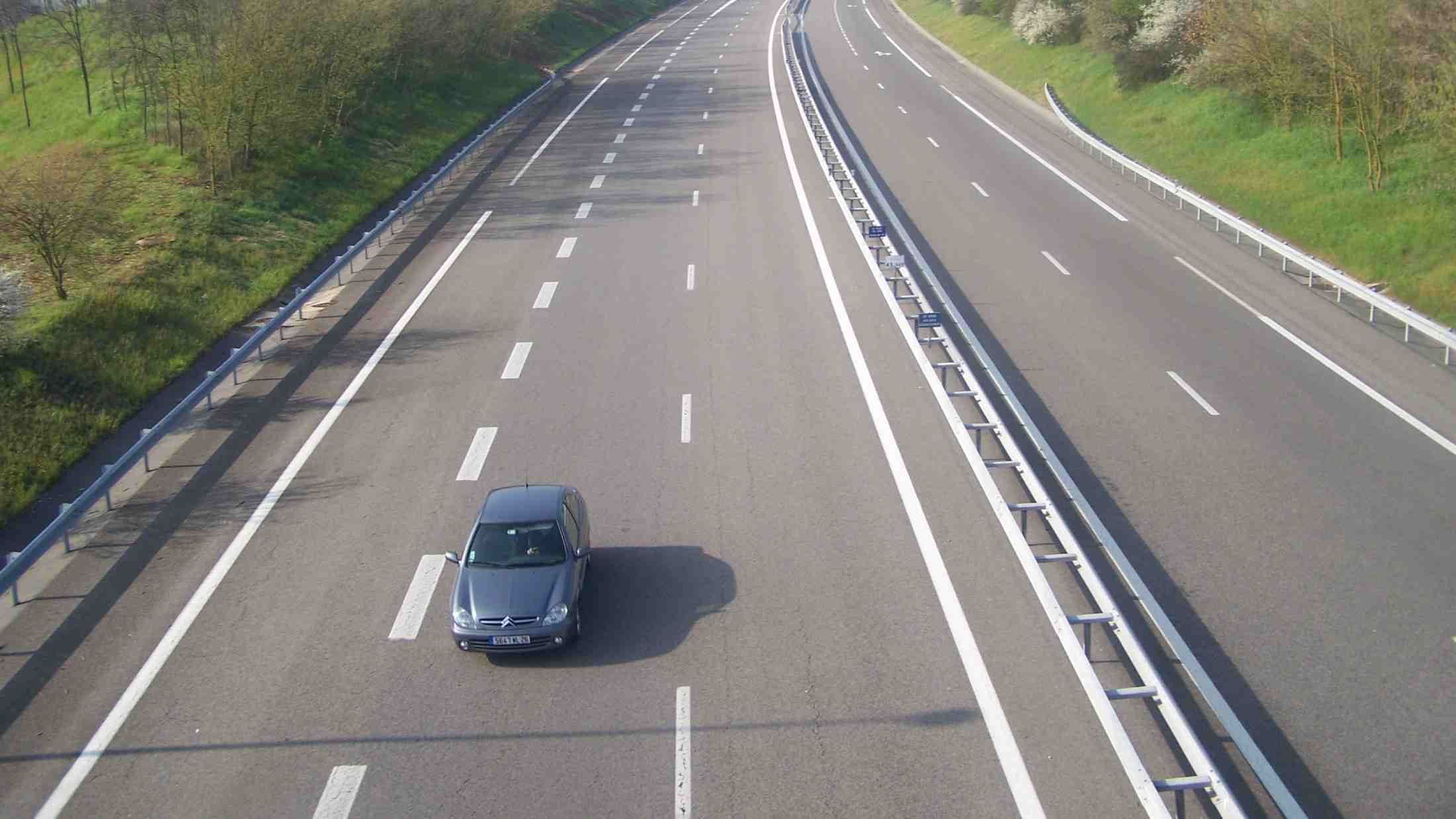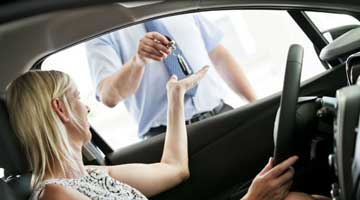Before you set off, check the Government’s website for up-to-date information about any travel restrictions.
Breathtaking mountainside passes. Scenic ocean roads. Empty country lanes. Driving is one of the best ways to navigate Europe's varied landscapes.
Whether you're crossing the Channel for business or pleasure, bringing the car along could make for a straightforward and relatively speedy journey.
But, driving abroad means you'll need to be aware of (and stick to) the local rules of the road. So for a safe and hassle-free tip, read this guide on what you need to know about driving in Europe:
- How has driving in Europe changed after Brexit?
- What other paperwork do I need for driving in Europe?
- Preparing your car for a European road trip
- Are my personal items covered while I'm out and about?
- Practical tips for driving in Europe
- Country-specific driving laws
- Plan your route
How has driving in Europe changed after Brexit?
Some changes have been made to the rules governing driving in Europe, car insurance and driving permits since leaving the EU.
Am I covered to drive in Europe?
Yes. UK-issued motor insurance policies automatically include the minimum level of third-party cover needed for driving in the EU. Your cover for driving in Europe may not be as extensive as it is at home though.
Check your policy wording to find out what you are and aren't covered for while driving abroad. If you're an AXA customer, your can do this from your online account.
What documents do I need to bring when driving in Europe?
- Your passport, which will need to have at least six months left before it's expired.
- Your valid Great Britain, or Norther Ireland, driving license. Check it's still valid, or renew your license online if it’s expired or is about to.
- If you're driving your own car, you'll need to take your V5C (logbook) and your insurance certificate. If you'll be hiring or leasing a car in the UK and taking that abroad, you'll need a valid VE103 certificate.
Depending on where you're driving, your might also need an international driving permit (hereafter referred to as an IDP). You can use the Government website to check whether you need an IDP before taking your car abroad. If you do need one, you can apply at the Post Office for a small fee.
What is a green card, and do I need one?
The green card is an international certificate of insurance issued by UK insurance providers. It proves that you have the right motor insurance in place to drive your car in certain countries.
You don't need a green card to drive anywhere in the EU, Andorra, Bosnia and Herzegovina, Iceland, Liechtenstein, Norway, Serbia or Switzerland. You may still need a green card to drive in countries outside of the EU.
Always check the requirements for the country you're travelling to, and leave enough time to apply for a green card before you go.
If you’re insured with AXA, get in touch for a green card. They can take up to two weeks to arrive.
What other paperwork do I need for driving in Europe?
If you drive safely and sensibly when travelling by road in Europe, you're unlikely to encounter many problems. But if an accident happens or you're stopped by local police, there are a few documents you'll need with you:
- A valid passport. Depending on the travel agreements agreed between the UK and the country you’re travelling to, you may need your passport to enter or exit the country.
- Full photocard driving licence.
- Your original V5C vehicle registration document.
It's also wise to take an international phone number for your car insurance and breakdown cover providers. AXA customers can contact us from abroad on the following numbers:
- To call for breakdown assistance in Europe: +44 (0) 1737 815 375
- To make a car insurance claim: +44 (0) 1732 376 249 or do it online.
Please note, European breakdown cover is an optional extra that you'll need to add to your policy at least 24 hours before you travel.
Preparing your car for a European road trip
To ensure your car is legally and mechanically fit for European roads, there are a few things you might need. These vary from country to country, so you need to check before you go.
For driving on the other side of the road, you'll need to headlamp beam adjustors so you don't dazzle drivers on your left. You can buy them from most auto shops, but they're not 'one size fits all'. Make sure you buy the right kit for your car model.
Most European countries need you to display a UK sticker at the rear of your car. Some European countries legally require motorists to carry items such as:
- A warning triangle
- A first aid kit
- Reflective jackets/waistcoats
- Spare bulbs for your headlights and taillights
- A fire extinguisher and basic tool kit. (These are often recommended, but not legally required.)
The rules can vary from country to country, so always check the legal advice for each country you’re travelling through. And as with any long car journey, you need to make sure your vehicle is in good condition before you leave. Consider getting it serviced before your trip, but at the very least you should:
- Check your tyre pressure. You can find the correct PSI figure for your car in the user manual, on the label inside the door frame, or the label inside the fuel flap.
- Check whether the tyres have enough tread. This should be a minimum of 1.6mm. Tyres wear down quickly when they get down to 3mm.
- Make sure there's enough oil in the engine
- Top up coolant and windscreen washers
- Store spare antifreeze, water and oil in the car in winter months
- Pack a tyre inflator/sealant set
You may also want to see a registered mechanic to make further checks, especially if you have any rattles, chips, scrapes or handling issues.
Are my personal items covered while I'm out and about?
It’s important to make sure you have the right travel insurance before you start your journey. If you are an AXA Home Insurance customer, you can add personal possessions cover to your policy as an optional extra when you first take out the policy or at renewal. The precious contents of your bag are covered from loss, theft or damage even when abroad. If you have personal possessions cover already, you can check your policy wording for the details.
Practical tips for driving in Europe
Before you set off on your journey, it's a good idea to take some time to familiarise yourself with the key differences between driving in the UK and in the European countries you'll pass through.
Whether you’re a seasoned traveller or driving abroad for the first time, here’s some essential road rules you'll need to keep in mind:
- You must be over 18 to drive in most European countries
- With the exceptions of Malta and Cyprus, you'll need to drive on the right-hand side of the road
- Road markings vary from country to country, so familiarise yourself with important road signs, markings and crossings to avoid nasty surprises
- Most speed limits across Europe are written in kilometres per hour (km/h) not miles per hour (mph). As a rough guide, it's worth remembering that 10mph is about 16km/h.
- Speed limits vary widely from country to country. Check local limits and pay attention to speed limit signs.
- If an emergency arises, you'll need to call 112 instead of 999
- You'll need to display a UK sticker on the back of your vehicle (if it's not already on your number plate). You can find out more about UK stickers requirements on the Government website.
- Radar and camera detectors (which pinpoint speed cameras) are illegal across much of the EU, even when built into satellite navs
- In Austria, the Czech Republic, Germany, Finland, Slovakia and Sweden, your car must be fitted with winter tyres during winter weather. Many countries also require drivers to carry snow chains in winter.
- In Croatia, Denmark, the Netherlands, Sweden and Switzerland, you must always have your headlights on, even during the day
- Drink driving laws vary across Europe, with many countries having rules stricter than the UK
- Many major cities have traffic-restricted areas and congestion charging zones, it's a good idea to avoid driving in urban centres, sticking to public transport instead
Country-specific driving laws
The rules can vary from country to country, so always check the local laws and requirements for each place you’ll be driving through.
Toll roads
There aren’t many toll roads in the UK, but they’re a fact of life in continental Europe – especially on motorways. In Spain, Italy and Portugal, tolls are charged for stretches of road.
While manned booths used to be the norm on motorway tolls, automated systems are gradually being rolled out and many don't accept cash. If you're travelling to France, consider purchasing a Telepeage device. It's linked to your credit or debit card, and read electronically as your car passes through the toll booth. This means drivers in right-hand vehicles don't need to lean over the front passenger seat to pay the attendant.
Vignettes
In Austria and Switzerland, you’ll need a vignette to travel on the motorway. You can get a digital vignette online, or a physical sticker you display on your windshield. The sticker versions are available from local post offices, newsagents and petrol stations.
Your vignette will be linked with your registration number, and checked by traffic cameras placed across the motorway networks. If you don’t have a valid vignette for your car, you could get an expensive fine.
Plan your route
In the age of the sat nav, getting lost on overseas roads isn’t the problem it used to be. That said, it’s still risky to be solely reliant on technology. If you're heading abroad, it's certainly worth taking a sat nav device with you, but you should also take a detailed, country-specific road atlas with you.
Before you head off, take some time to plan the best route. And if you’re travelling with friends or family, ask one of the passengers to familiarise themselves with the route, too.
It's also worth packing a phrase book and learning a few key terms in the local language. Just knowing the correct terms for ‘left’, ‘right’ and ‘straight ahead’ can help a great deal if you need to stop and ask for directions.
Preparation is key. That’s why it’s a good idea to get as organised as you can before you hit the highway. Make sure you brush up on the latest driving laws so your European driving trip goes without a hitch.




